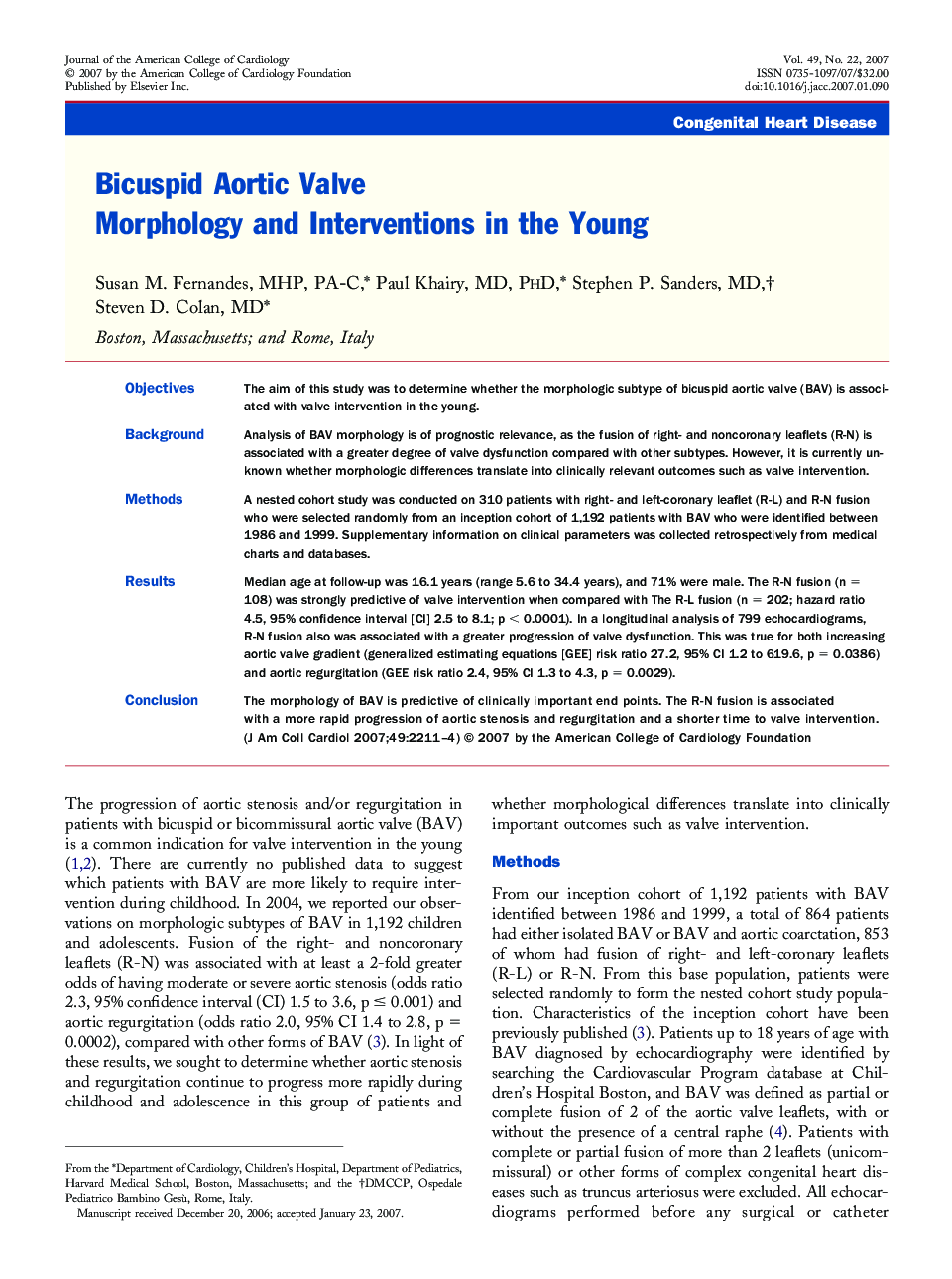| Article ID | Journal | Published Year | Pages | File Type |
|---|---|---|---|---|
| 2954413 | Journal of the American College of Cardiology | 2007 | 4 Pages |
ObjectivesThe aim of this study was to determine whether the morphologic subtype of bicuspid aortic valve (BAV) is associated with valve intervention in the young.BackgroundAnalysis of BAV morphology is of prognostic relevance, as the fusion of right- and noncoronary leaflets (R-N) is associated with a greater degree of valve dysfunction compared with other subtypes. However, it is currently unknown whether morphologic differences translate into clinically relevant outcomes such as valve intervention.MethodsA nested cohort study was conducted on 310 patients with right- and left-coronary leaflet (R-L) and R-N fusion who were selected randomly from an inception cohort of 1,192 patients with BAV who were identified between 1986 and 1999. Supplementary information on clinical parameters was collected retrospectively from medical charts and databases.ResultsMedian age at follow-up was 16.1 years (range 5.6 to 34.4 years), and 71% were male. The R-N fusion (n = 108) was strongly predictive of valve intervention when compared with The R-L fusion (n = 202; hazard ratio 4.5, 95% confidence interval [CI] 2.5 to 8.1; p < 0.0001). In a longitudinal analysis of 799 echocardiograms, R-N fusion also was associated with a greater progression of valve dysfunction. This was true for both increasing aortic valve gradient (generalized estimating equations [GEE] risk ratio 27.2, 95% CI 1.2 to 619.6, p = 0.0386) and aortic regurgitation (GEE risk ratio 2.4, 95% CI 1.3 to 4.3, p = 0.0029).ConclusionThe morphology of BAV is predictive of clinically important end points. The R-N fusion is associated with a more rapid progression of aortic stenosis and regurgitation and a shorter time to valve intervention.
